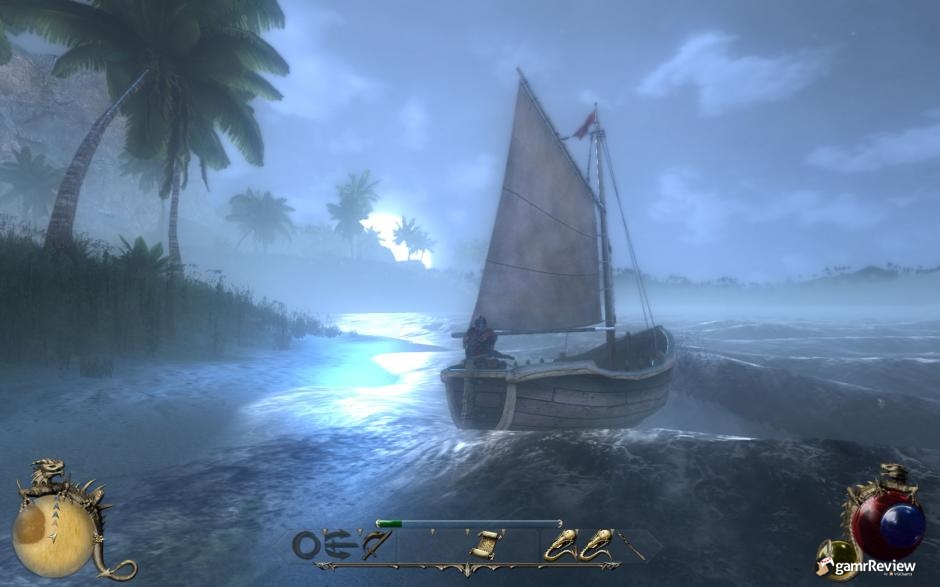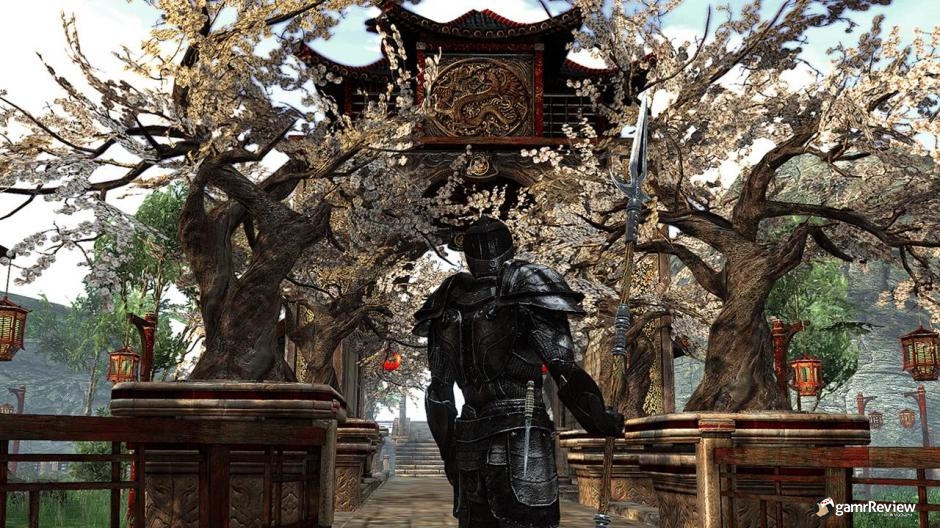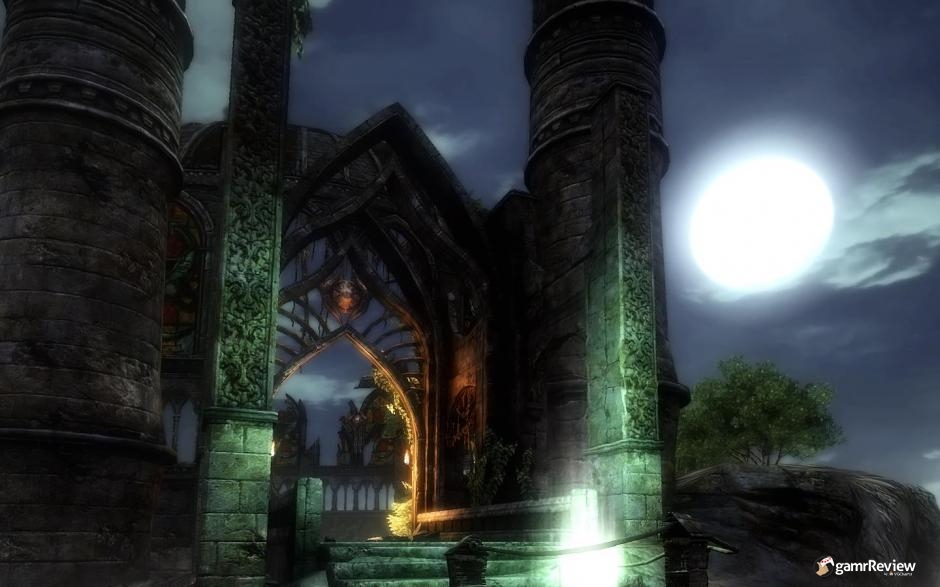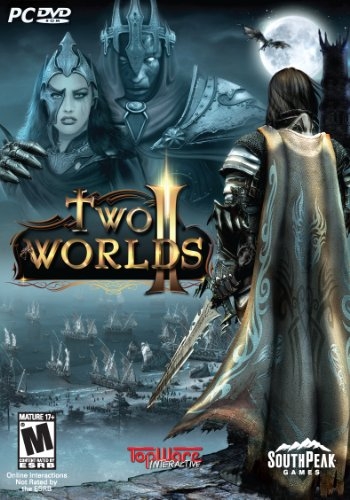
Two Worlds II - Review
by VGChartz Staff , posted on 26 January 2011 / 5,544 ViewsIf there was one thing surrounding the release of Two Worlds II, it was a sense of dread from gamers and reviewers alike. Though I’ve not played the original, I’ve read enough to know that it was generally considered to be rubbish.
Going against a wave of negative sentiment, Two Worlds II has a lot to live up to – and it does. Two Worlds II is a solid game. It has its share of flaws, but there is enough quality to draw you in and make you say that classic phrase, “just a few more minutes.”
Following the sequences of the last game, Two Worlds II opens with you and your sister locked up by the evil Gandohar. Within a few short moments you find yourself freed by a small band of orcs, who take you under their wing to help unite various groups to fight against Gandohar’s tyrannical rule.
Going against a wave of negative sentiment, Two Worlds II has a lot to live up to – and it does. Two Worlds II is a solid game. It has its share of flaws, but there is enough quality to draw you in and make you say that classic phrase, “just a few more minutes.”
Following the sequences of the last game, Two Worlds II opens with you and your sister locked up by the evil Gandohar. Within a few short moments you find yourself freed by a small band of orcs, who take you under their wing to help unite various groups to fight against Gandohar’s tyrannical rule.
What follows is essentially a very long tutorial – almost two hours long – a very on-rails experience that gives you the foundation of attacking, abilities, spells, and other basics. After you are cleared to teleport to the bright savannah of Erimos, the game opens up.

The first thing you’ll notice after creating your character through the standard-issue character-generator-thingy is that the game feels pretty responsive, save for jumping. Jumping for some reason feels like you’re stuck neck-deep in mud, and really feels out of the place with the rest of the controls. This is really noticeable when you’re trying to get on a horse and you find yourself pseudo-floating through the air rather than just getting on.
A minimap and detailed overhead map give you a good sense of where you’re going, and you definitely need it in the large overworld of Two Worlds II. There is a lot of ground (and water) to cover, and a good amount of optional dungeons to find (more on them later).
If there is one place Two Worlds II shines, it is in the presentation of the environment. Everything looks crisp, clean, and incredibly vibrant. The developers did an excellent job of making the natural environment seem just that – natural.
Adding to the look of the game is the simple but strong score, which augments whatever place you happen to be in. It’s easy to phase out after hearing for a while, but it does a good job of bringing you one step closer into the game. Unfortunately the voice acting is on the poor side of average, with some really bizarre volume differences. The orcs almost whisper but the prophetess is turned up to 11, which jarred me to the point of adjusting my volume in between conversations. The main character was grating at first, but after a while he grew on me, save for the repetitive things he yells during combat.
A minimap and detailed overhead map give you a good sense of where you’re going, and you definitely need it in the large overworld of Two Worlds II. There is a lot of ground (and water) to cover, and a good amount of optional dungeons to find (more on them later).
If there is one place Two Worlds II shines, it is in the presentation of the environment. Everything looks crisp, clean, and incredibly vibrant. The developers did an excellent job of making the natural environment seem just that – natural.
Adding to the look of the game is the simple but strong score, which augments whatever place you happen to be in. It’s easy to phase out after hearing for a while, but it does a good job of bringing you one step closer into the game. Unfortunately the voice acting is on the poor side of average, with some really bizarre volume differences. The orcs almost whisper but the prophetess is turned up to 11, which jarred me to the point of adjusting my volume in between conversations. The main character was grating at first, but after a while he grew on me, save for the repetitive things he yells during combat.

In that scenery you’ll find your usual fare of animals, monsters, and undead bent on your demise. It’s unfortunately in the combat that Two Worlds II has most of its failings. Melee combat feels overly button mashy and you often find yourself wildly swinging, sometimes in the wrong direction, until the enemy hopefully goes down first. Archery has lock-on and free-firing “sniper” modes, which unfortunately will likely become your mainstay when it comes to fighting strong monsters. Many monsters have a defined “territory” of where they can go, so early fighting (I’m looking at you, giant ants) can consist of standing a few feet outside that zone and mindlessly firing arrows until the creature dies.
And heaven help you if you decide to go melee, because this game has one of the weirdest difficulty curves I have ever seen. Many side dungeons are simply unassailable early on due to the incredible difficulty of the monsters. We’re talking one-hit-kill territory here. Sometimes you’ll be fighting incredibly weak monsters then suddenly be downed in a single combo by a super-powered variant of that monster. You know, it’s not too much trouble to call him a “Grom Leader” or something to warn the players they’re about to be turned into salad. With some care and caution you can make it through easily enough, but you’ll be doing a lot of walking to visit all the areas you previously discovered just so you can actually explore them. And of course there are always the monsters that let you shoot them full of holes without any reaction at all.
Casting magic is easy enough, but creating the spells for it is another matter entirely. You have spell amulets in which you combine various spell cards which in turn creates a spell. Cards come in three flavors: effect, carrier, and modifier. For example, if you add a fire effect to a missile carrier, you get a fire bolt. You can add a homing modifier to make it chase down enemies, or a reflect modifier to bounce off walls. The spell creation system gets very complex and can be really overwhelming at first. On the other hand, Two Worlds II does allow you substantial room to make pretty interesting spells.
The intricacy goes into alchemy and blacksmithing as well. Combining the dozens of ingredients allows you to make a number of various potions with varying effects. As for blacksmithing, you can break down weapons into component parts, use those parts to upgrade your gear, and then add magical crystals – which can be created through a different process entirely.
And heaven help you if you decide to go melee, because this game has one of the weirdest difficulty curves I have ever seen. Many side dungeons are simply unassailable early on due to the incredible difficulty of the monsters. We’re talking one-hit-kill territory here. Sometimes you’ll be fighting incredibly weak monsters then suddenly be downed in a single combo by a super-powered variant of that monster. You know, it’s not too much trouble to call him a “Grom Leader” or something to warn the players they’re about to be turned into salad. With some care and caution you can make it through easily enough, but you’ll be doing a lot of walking to visit all the areas you previously discovered just so you can actually explore them. And of course there are always the monsters that let you shoot them full of holes without any reaction at all.
Casting magic is easy enough, but creating the spells for it is another matter entirely. You have spell amulets in which you combine various spell cards which in turn creates a spell. Cards come in three flavors: effect, carrier, and modifier. For example, if you add a fire effect to a missile carrier, you get a fire bolt. You can add a homing modifier to make it chase down enemies, or a reflect modifier to bounce off walls. The spell creation system gets very complex and can be really overwhelming at first. On the other hand, Two Worlds II does allow you substantial room to make pretty interesting spells.
The intricacy goes into alchemy and blacksmithing as well. Combining the dozens of ingredients allows you to make a number of various potions with varying effects. As for blacksmithing, you can break down weapons into component parts, use those parts to upgrade your gear, and then add magical crystals – which can be created through a different process entirely.

The inventory can be a bit frustrating, especially when you’re breaking down weapons and armor into component materials. Since the game lets you have three loadouts, you often have a busy inventory that can get confusing when you’re breaking down 15 identical swords, only to find you accidentally broke down the one you’ve been leveling up for a while. The inventory seems optimized for a mouse interface, but that could just be me.
The meat of Two Worlds II is the quest selection, and on the whole I found it to be really satisfying. There are plenty of different things to do and quests have a real knack of opening up into more and more quests, which really gives Two Worlds II that 'can’t-put-down' quality. Even through the failings of the combat, the world remains interesting and immersive enough that you really want to just keep going, even if it’s 5:30 a.m. and you have a 600-level college seminar the next morning (voice of experience).
There’s also a multiplayer component which shows some real promise. There are several game modes, including a deathmatch, a seven-chapter quest series where you work for the evil Gandohar, and a hybrid strategy game where you build up a town and keep the residents happy and healthy. I was playing before release, so the only thing I could interact with was the quest series, which showed some real promise for being an entertaining diversion from the standard singleplayer. You do create a separate character for multiplayer, but the multiplayer selection is more rigid and actually makes you choose a class of character, rather than your ace-of-all-trades single player protagonist.
Two Worlds II does go for some intricacy in places, but in doing so it falls short on some of the basics. Combat, difficulty scaling, and horseback riding are just a few of the minor but sometimes glaring flaws that keep this from being a really great game. That said, it approaches greatness with among other things a strong ability to keep you playing despite its shortcomings. The world of Antaloor may not be perfect, but with all the quests and activities to keep you occupied, the single-player alone makes this game worth checking out. Add in the potentially entertaining multiplayer, and you have some good value for your buck.
One thing is for sure, Two Worlds II shows that the franchise has some promise for lasting appeal. Considering the stain of the first game in the franchise, I’d say that Two Worlds II is one of the best franchise turnarounds in recent memory.
The meat of Two Worlds II is the quest selection, and on the whole I found it to be really satisfying. There are plenty of different things to do and quests have a real knack of opening up into more and more quests, which really gives Two Worlds II that 'can’t-put-down' quality. Even through the failings of the combat, the world remains interesting and immersive enough that you really want to just keep going, even if it’s 5:30 a.m. and you have a 600-level college seminar the next morning (voice of experience).
There’s also a multiplayer component which shows some real promise. There are several game modes, including a deathmatch, a seven-chapter quest series where you work for the evil Gandohar, and a hybrid strategy game where you build up a town and keep the residents happy and healthy. I was playing before release, so the only thing I could interact with was the quest series, which showed some real promise for being an entertaining diversion from the standard singleplayer. You do create a separate character for multiplayer, but the multiplayer selection is more rigid and actually makes you choose a class of character, rather than your ace-of-all-trades single player protagonist.
Two Worlds II does go for some intricacy in places, but in doing so it falls short on some of the basics. Combat, difficulty scaling, and horseback riding are just a few of the minor but sometimes glaring flaws that keep this from being a really great game. That said, it approaches greatness with among other things a strong ability to keep you playing despite its shortcomings. The world of Antaloor may not be perfect, but with all the quests and activities to keep you occupied, the single-player alone makes this game worth checking out. Add in the potentially entertaining multiplayer, and you have some good value for your buck.
One thing is for sure, Two Worlds II shows that the franchise has some promise for lasting appeal. Considering the stain of the first game in the franchise, I’d say that Two Worlds II is one of the best franchise turnarounds in recent memory.
VGChartz Verdict
7.9
Good


























